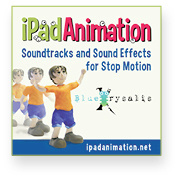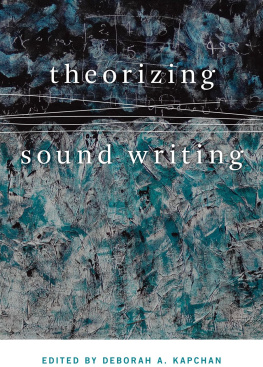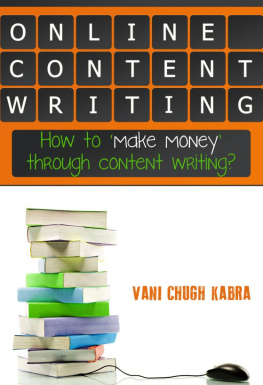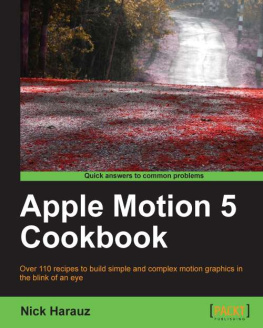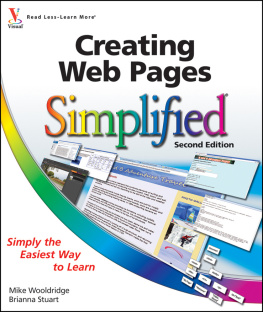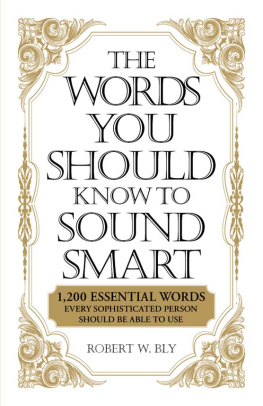Writing for the Web
Creating Compelling Web Content Using Words, Pictures and Sound
Lynda Felder

Writing for the Web
Creating Compelling Web Content Using Words, Pictures and Sound
Lynda Felder
New Riders
1249 Eighth Street
Berkeley, CA 94710
510/524-2178
510/524-2221 (fax)
Find us on the Web at www.newriders.com
To report errors, please send a note to
New Riders is an imprint of Peachpit, a division of Pearson Education
Copyright 2012 by Lynda Felder
Associate Editor: Valerie Witte
Production Editor: Danielle Foster
Developmental Editor: Anne Marie Walker
Copyeditor: Anne Marie Walker
Proofreader: Scout Festa
Composition: Danielle Foster
Indexer: Joy Dean Lee
Cover Design: Charlene Charles-Will
Interior Design: Charlene Charles-Will and Danielle Foster
Photo Credits
Photo of Cuneiform script on clay tablet is in the public domain.
All other photos by Yashwin Chauhan. Yashwin Chauhan. All rights reserved.
Notice of Rights
All rights reserved. No part of this book may be reproduced or transmitted in any form by any means, electronic, mechanical, photocopying, recording, or otherwise, without the prior written permission of the publisher. For information on getting permission for reprints and excerpts, contact .
Notice of Liability
The information in this book is distributed on an As Is basis, without warranty. While every precaution has been taken in the preparation of the book, neither the author nor Peachpit shall have any liability to any person or entity with respect to any loss or damage caused or alleged to be caused directly or indirectly by the instructions contained in this book or by the computer software and hardware products described in it.
Trademarks
Many of the designations used by manufacturers and sellers to distinguish their products are claimed as trademarks. Where those designations appear in this book, and Peachpit was aware of a trademark claim, the designations appear as requested by the owner of the trademark. All other product names and services identified throughout this book are used in editorial fashion only and for the benefit of such companies with no intention of infringement of the trademark. No such use, or the use of any trade name, is intended to convey endorsement or other affiliation with this book.
ISBN-13: 978-0-321-79443-7
ISBN10: 0-321-79443-5
9 8 7 6 5 4 3 2 1
Printed and bound in the United States of America
For my sister, Carol
Acknowledgments
I would like to thank and acknowledge several people for their support in writing this book.
From Peachpit, Valerie Witte, who supported the idea of this book and kept it moving forward; Anne Marie Walker, who skillfully edited with just the right mix of demands and encouragement; designers Charlene Will and Danielle Foster, who made the pages look so inviting; and the rest of the impressive team.
Platt College students, who often make the classroom magical with their artistic focus and playful nature. The faculty and staff, who generously share their time and knowledge; and the dean, Marketa Hancova, for her leadership and inspiration.
My siblings, Marilyn and David, whom I can always count on.
My husband, Yashwin, who is not only an amazing photographer, but a constant source of amusement, strength, and support.
Start Here
Think about the last gadget you bought. If youre like most people, you felt a rush of excitement when you opened the package and couldnt wait to get your hands on the new toy. Its highly unlikely that you thought about reading the manual before you started pressing buttons and playing with your new purchase.
Figure I.1 We reach for instructions when all else fails.
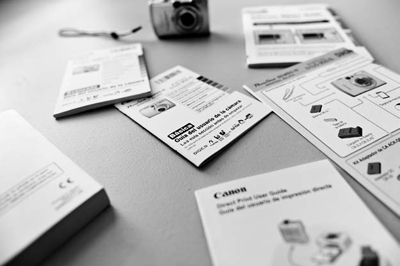
Dont Make Me Read
When a new object comes into your life, you simply want to point it in the right direction and make it work. The point-and-shoot mentality extends to everything, not just new gadgets. If the products design is not intuitive, youre likely to think the designer was stupid or overzealous.
The same is true for Web content. When readers land on a Web page, theyre not looking for Instructions for Use. Most dont have much time, and most dont have patience. Readers just want to land on the right page, instantly find what theyre looking for, and then zoom off. When they stumble onto long paragraphs, when the text is unclear or boring, or when they find themselves studying, searching, or backtracking, they jump ship and head back to Google to search for better content.
How People Read a Web Page
In 1997, Jakob Nielsen pointed out that people dont typically read text on a Web page word for word. Rather, they scan, picking out words and phrases that are helpful. See Jakob Nielsens October 1997 Alertbox column How Users Read on the Web, which is available at www.useit.com.
Why You Should Read This Book
Most likely, you picked up this book because you want to better your skills at writing Web content. With many books available about this topic, why should you read this book?
Its a thin book. Fat books typically dont follow their own guidelines, such as be succinct!
Its designed to allow you to zoom in to find what you need, and then quickly skip to another topic.
It encourages you to engage, to observe, to think, and to try various effective writing tasks. The chapters are packed with examples, challenges, and suggestions.
It focuses on words, pictures, and sounds as story elements for your Web content rather than the mechanics of using specific software and tools. Theres already a flood of good books available on how to use the latest tools and technology to capture and publish media. (Youll find suggestions for good books to read at www.write4web.com.)
How to Read This Book
As you read this book, youll find there are no rules except to follow your own instincts. Youll get the most out of the book if you take breaks from reading to try the suggestions and challenges.
Try This
Every chapter is peppered with Try this suggestions. Dont ignore these suggestions. Youll get the most out of this book if you pause, put down the book, and try the ideas offered. Youll learn the most if you decide right now to try everything with a playful spirit and an open mind.
Challenges
At the end of each chapter, youll find challenges that include writing prompts for freewriting and suggested exercises that will take more time.
Make sure you spend time on your own writing practice. As with any other discipline, the only way to get better at Web writing is to put in the time composing Web content. The art of creating compelling Web content is similar to any other art. You cant learn to dance by watching ballerinas. You cant learn to play the piano by listening to lectures or reading sheet music. Although its helpful to listen with a keen ear to the music you enjoy, that wont place the magic in your fingertips. A pianist practices scales. A pianist plays finger exercises. A talented pianist spends hours and hours at the keyboard. A talented Web writer practices writing.
Consider all the suggestions, writing prompts, and assignments in this book as part of your finger exercises and part of your practice, moving you toward passionate, exciting Web stories.


